How to Stay Compliant With Google’s Medic Update
Ensuring Your Website Maintains Authority in the Era of Algorithm Changes


How to Stay Compliant With Google’s Medic Update
Understanding Google's Medic Update and Its Long-Term Implications
In August 2018, Google launched the Medic update, a broad core algorithm change that significantly affected health, wellness, and YMYL (Your Money or Your Life) websites. This update shifted focus toward high-quality, authoritative content, emphasizing the importance of E-A-T (Expertise, Authority, Trustworthiness). For website owners, understanding the nuances of this update is crucial to remaining compliant, maintaining visibility, and fostering trust with users. This article explores how to adapt your SEO practices to stay aligned with Google's evolving standards and ensure your site’s long-term success.
The Core of the Medic Update: Emphasizing E-A-T and User Intent
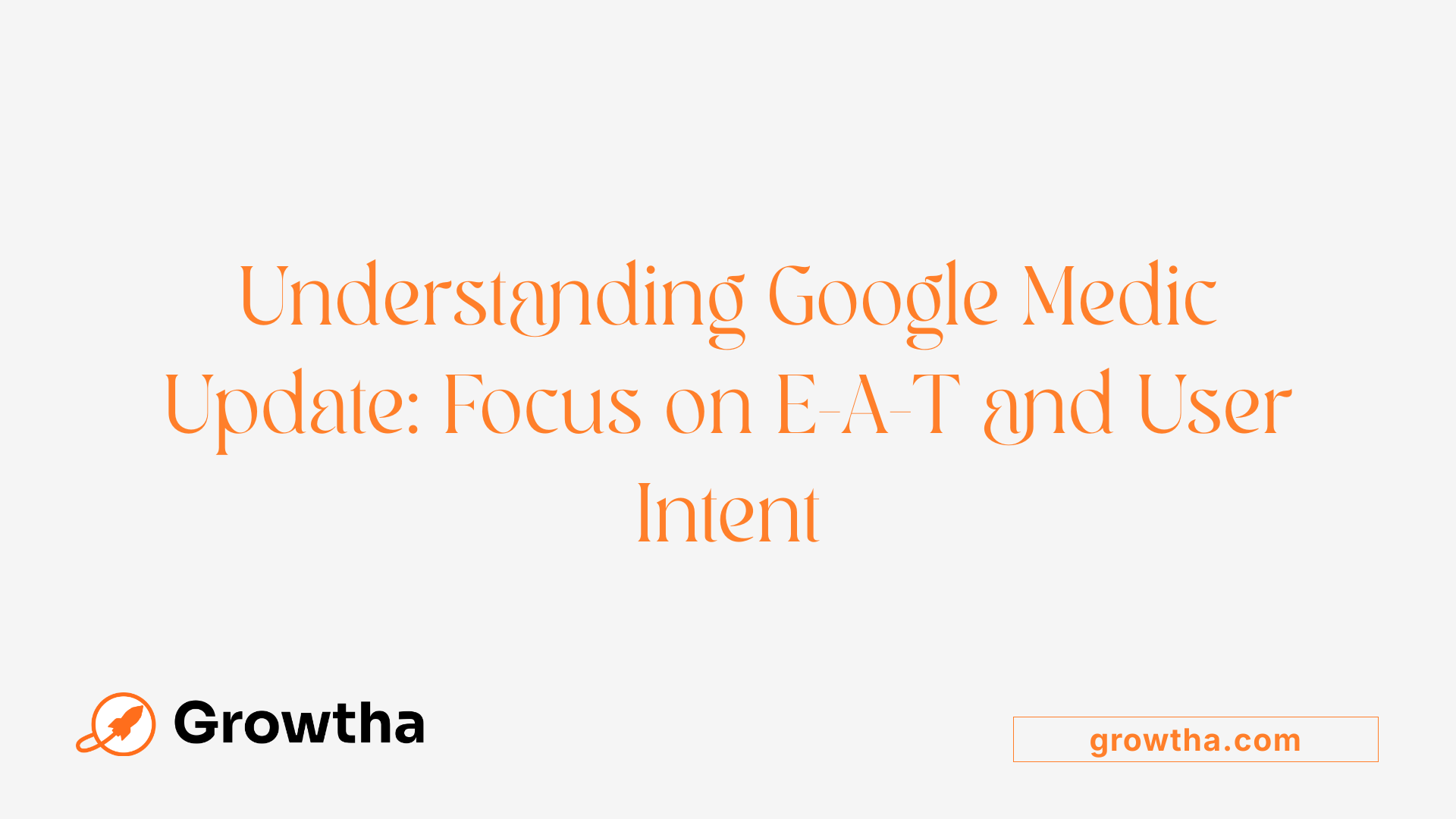
What is the Google Medic Update?
Google's Medic Update, launched broadly in August 2018, was a major algorithm change that aimed to enhance the ranking of content demonstrating high levels of Expertise, Authority, and Trustworthiness (E-A-T). This update specifically targeted sectors deemed to be 'Your Money or Your Life' (YMYL), such as health, finance, and legal services, where misinformation can significantly impact individuals' well-being and financial stability.
The update was part of Google's ongoing efforts to provide users with more reliable and credible search results. By focusing on the trustworthiness of content creators and the quality of information, Google sought to reduce the influence of low-quality, unverified sources that could offer misleading or harmful guidance.
Focus on E-A-T principles
The core principle of this update revolved around Google’s E-A-T framework, which stands for Expertise, Authority, and Trustworthiness. Websites that clearly demonstrated these qualities through qualified authors, reputable sources, and transparent credentials generally fared better after the update.
Google’s Search Quality Rater Guidelines were also revised in July 2018 to reinforce the importance of E-A-T, especially for content serving critical sectors like healthcare. Sites that invested in peer-reviewed content, author bios, proper citations, and ongoing updates aligned more with Google's expectations and thus improved their chances of rankings stability.
Content that lacked clear author qualifications, was thin or superficial, poorly accessible, or had low technical health suffered ranking declines. Conversely, well-established sites backed by recognized professionals, medical bodies, charities, or experts saw relative improvements.
Impact on health and medical sites
Health and medical websites, categorized as YMYL sites, experienced substantial fluctuations in their search rankings due to the update. Google prioritized content created by qualified professionals, emphasizing the need for demonstrating expertise, authority, and trustworthiness.
Sites with recognized medical credentials, transparent author bios, peer-reviewed articles, and positive reputation signals maintained or increased their visibility. Those without verified credentials or with questionable content faced significant ranking drops.
This shift underscored the importance for health-related websites to adhere strictly to Google’s standards, providing accurate, well-sourced, and authoritative information. Additionally, the update encouraged websites to establish authoritative profiles, link to reputable research, and ensure their content was regularly reviewed for accuracy.
Monitoring and Recovery
Recovery from ranking declines caused by the Medic update varied. Some sites saw quick improvements by revising content, strengthening their author profiles, and fixing technical issues. Others took months to recover, often requiring comprehensive SEO audits focusing on trust signals, content quality, and backlink quality.
In summary, the Medic Update was a clear signal that Google aims to promote high-quality, trustworthy content especially in sectors directly affecting users’ health and safety. Demonstrating expertise, authority, and trustworthiness through well-documented, accurate, and user-centric content remains vital for maintaining or enhancing search visibility in challenging sectors.
The Role of E-A-T in Google’s Quality Assessment
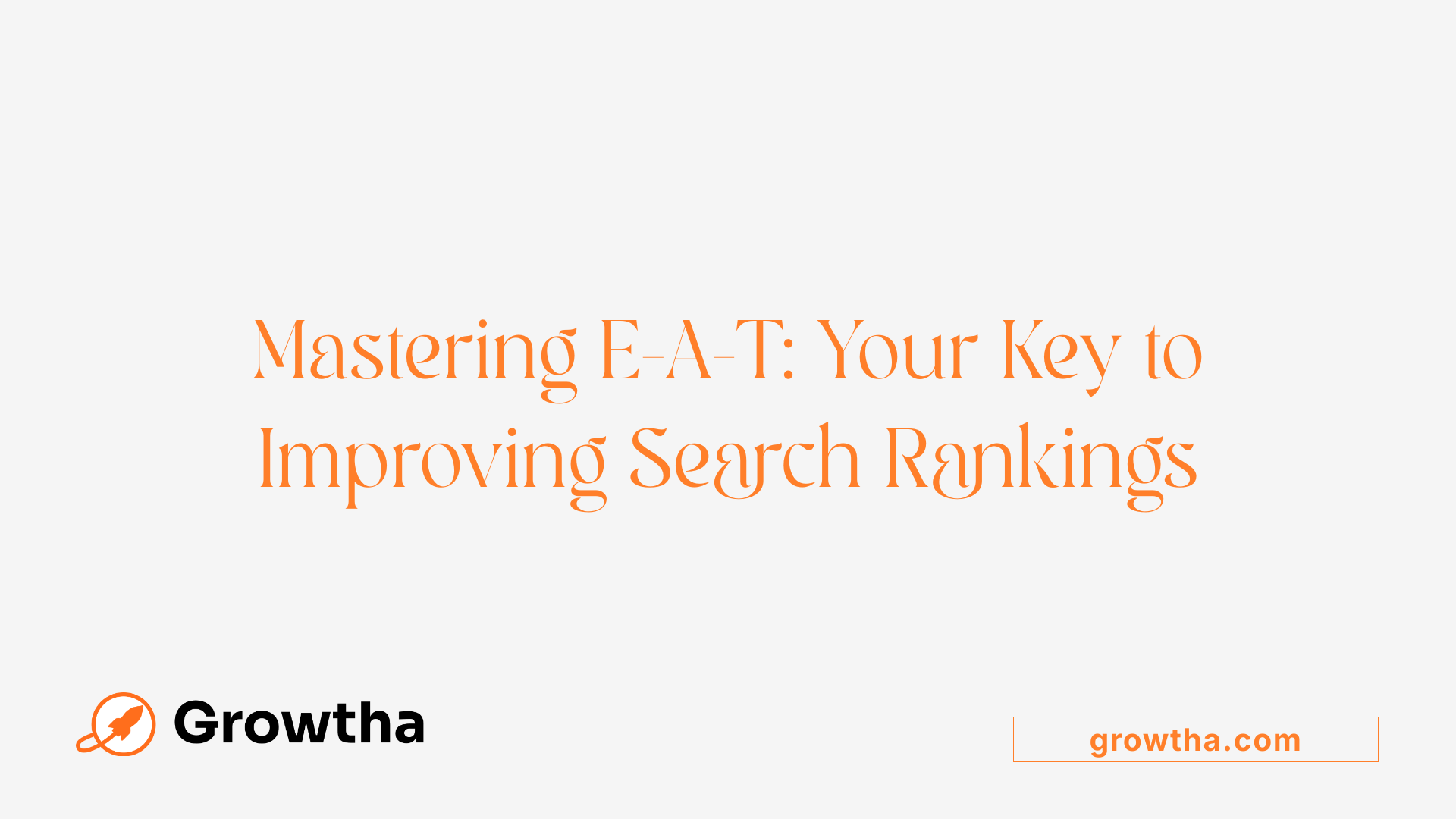
What is Google’s E-A-T, and why is it important?
E-A-T stands for Expertise, Authority, and Trustworthiness. It forms a core part of Google's guidelines used by its search quality raters to assess the overall quality of a website's content, particularly in categories that can impact people's health, safety, and financial well-being, known as YMYL (Your Money or Your Life) sectors.
During the 2018 Medic update, Google emphasized the importance of high E-A-T scores. Websites demonstrating strong expertise, authoritative voice, and trustworthy reputation are deemed more relevant and reliable. This is especially crucial in health, medical, and financial fields, where inaccurate information can lead to serious consequences.
Google’s goal is to prioritize content that aligns with user intent and provides value. High E-A-T signals influence search rankings by helping Google identify trustworthy sources, thereby improving the quality and safety of search results.
Implementation of E-A-T in content creation
To align with Google's E-A-T standards, website owners should focus on creating high-quality, well-researched content. This begins with featuring qualified writers, such as medical professionals or recognized industry experts, whose credentials are clearly displayed.
A few strategies include:
- Including detailed author bios with relevant qualifications.
- Linking to reputable, peer-reviewed sources.
- Maintaining transparent contact and ownership information.
- Regularly updating content to reflect the latest research.
- Securing positive reviews and reputation signals.
Technical and content audits can identify gaps in demonstrating E-A-T. For instance, thin or outdated content should be revised, and any reputation issues, like negative reviews, should be addressed proactively.
Impact of E-A-T on rankings
Websites with strong E-A-T signals tend to perform better in search rankings, especially after broad core updates like Medic. Conversely, sites with poor E-A-T signals—such as unverified authorship, low-quality backlinks, or inconsistent information—are vulnerable to ranking drops.
In health and other YMYL sectors, Google's emphasis on E-A-T means that trust signals can make or break a website's visibility. Content that showcases expertise and authority through credible authorship and accurate, comprehensive information usually gains higher rankings.
This focus encourages website owners to prioritize reputation-building efforts, produce authoritative content, and adhere to Google's quality guidelines to maintain and improve their search presence.
| Aspect | How It Influences Ranking | Practical Implementation Example |
|---|---|---|
| Expertise | Ensures content is created by knowledgeable authors | Medical articles written by licensed healthcare professionals |
| Authority | Demonstrates recognition from the community or industry | Links from reputable sites, featured expert authors |
| Trustworthiness | Builds confidence through transparency and positive reputation signals | Clear contact info, verified reviews, secure website (SSL, etc.) |
Remaining vigilant about E-A-T can significantly impact SEO success, especially in high-stakes sectors. Consistent efforts to demonstrate expertise, authority, and trustworthiness create a resilient foundation for long-term rankings.
Implementing Content Improvements Post-Update
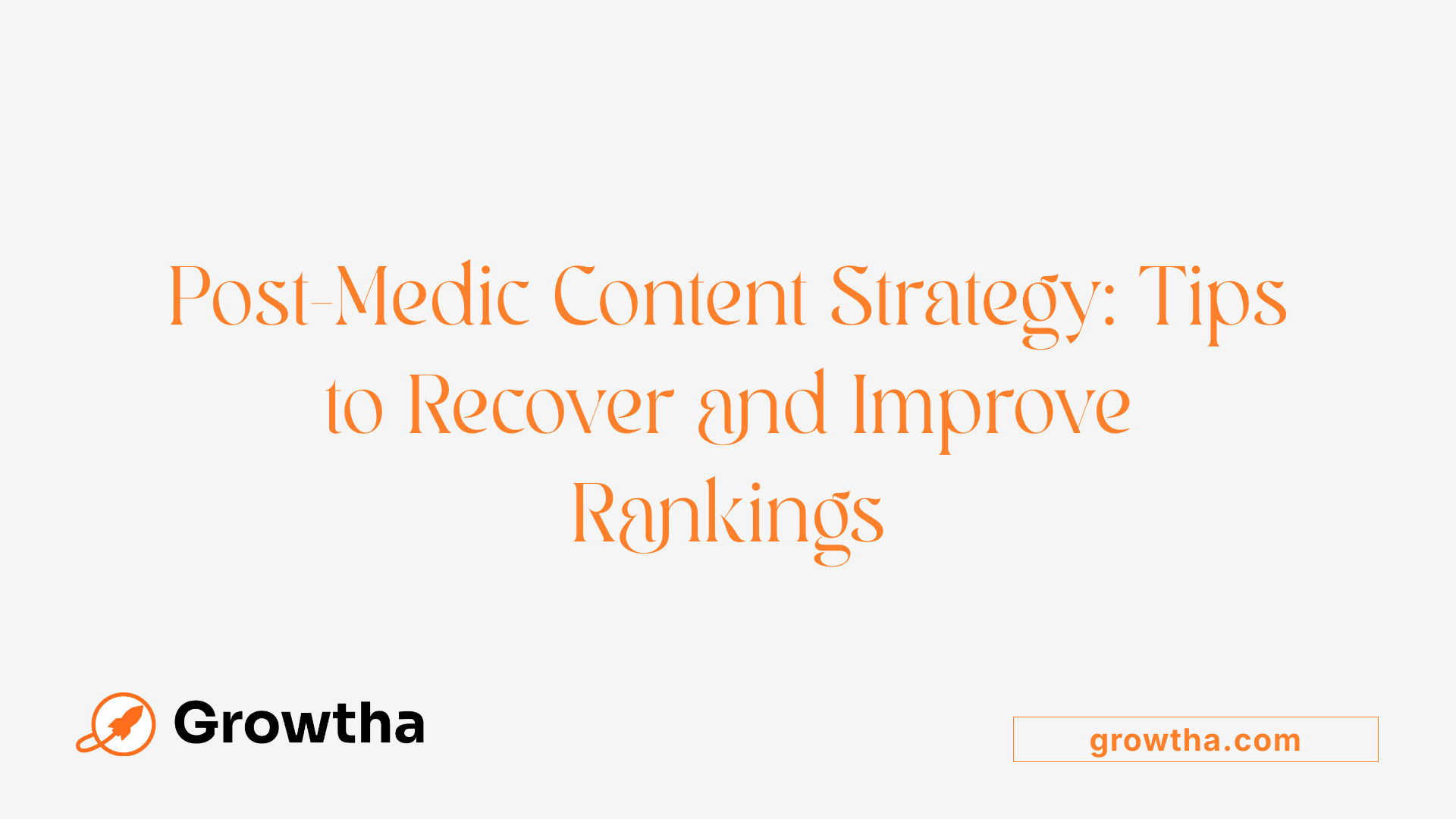
How can a website recover from Google’s Medic-related ranking drops?
Recovery from the impact of the Google Medic update primarily involves a comprehensive overhaul of your website's content and authority signals. Start by revising existing content to better demonstrate expertise and credibility. This includes updating outdated information with the latest research, statistics, and guidelines relevant to your niche.
A crucial aspect is enriching author bios to showcase qualifications, credentials, and professional experience. Transparent and detailed author profiles help establish authority and trustworthiness, which are vital under Google’s E-A-T (Expertise, Authority, Trustworthiness) standards.
Building high-quality backlinks from reputable, industry-relevant websites also plays an essential role. These links serve as trust signals and help improve your domain authority.
Additionally, ensure the content is aligned with user intent—providing clear, accurate, and helpful answers to search queries. All these steps combined can help regain lost rankings and improve overall site trustworthiness.
What specific content strategies help improve trustworthiness?
To boost trustworthiness, focus on producing comprehensive, well-researched, and fact-checked content. Include citations from reputable sources like academic journals, official reports, or industry leaders to reinforce your claims.
Creating transparent author profiles is equally important. Display credentials, professional backgrounds, and, where appropriate, links to expert profiles or affiliations. This transparency reassures both users and Google that your content is generated by qualified individuals.
Regular updates are vital—review and refresh content periodically to reflect the latest developments and accurate information. Adding clear contact information, privacy policies, and user reviews further demonstrates reliability.
Are there technical SEO aspects to consider in the recovery process?
Absolutely. Conducting a thorough site audit should be a priority. Identify and fix issues that might hinder user experience or search engine crawling. Key technical SEO tasks include improving site speed (aim for load times under 3 seconds), ensuring mobile-friendliness, fixing broken links, and optimizing site structure for easy navigation.
Ensure your website uses HTTPS to secure user data, which is also a trust factor recognized by Google. Optimize metadata, such as titles and descriptions, to accurately reflect content and avoid any misleading representations.
Addressing these technical elements not only improves user experience but also aligns your site with Google’s quality signals, aiding in recovery from algorithm updates like Medic.
The Significance of Backlinks and Reputation Building
How important are backlinks post-Medic update?
After the 2018 Medic update, backlinks have maintained their crucial role in website ranking, especially for YMYL (Your Money, Your Life) sites like health and financial services. High-quality backlinks from trusted and relevant sources act as endorsements, signaling to Google that your site is credible and authoritative.
In the context of the Medic update, where Google emphasized E-A-T (Expertise, Authority, Trustworthiness), backlinks from established industry authorities help demonstrate these qualities. They can assist websites in recovering from ranking declines caused by low-authority content or poor reputation signals.
Moreover, backlinks influence how Google perceives the overall trustworthiness of a site. Especially in health and medical niches, reputable backlinks from recognized organizations, medical bodies, or professional experts reinforce content validity and boost search performance.
What strategies can help build a strong backlink profile?
Creating a robust backlink profile requires consistent effort and strategic planning. Some effective methods include:
- Guest Blogging: Contributing high-quality articles to recognized industry blogs and websites enhances your credibility and earns authoritative backlinks.
- Shareable Content Creation: Developing engaging assets like detailed research studies, infographics, or comprehensive guides encourages other sites to link to your content naturally.
- Partnerships and Collaborations: Building relationships with industry leaders, medical professionals, and academic institutions can lead to collaborations and backlinks from trusted sources.
- Outreach Campaigns: Reaching out directly to relevant websites and content creators helps promote your content and secure backlinks.
- Participation in Online Communities: Engaging in forums, webinars, and industry events can lead to natural mentions and links.
Adopting these methods aligns with the emphasis on high-quality, trustworthy backlinks recommended for improving E-A-T and overall site authority.
How do reputation signals influence rankings?
Reputation signals extend beyond backlinks and include elements like reviews, media recognition, and endorsements. Positive reputation signals significantly contribute to perceived authority and trustworthiness.
- Customer Reviews and Testimonials: Consistently positive reviews on platforms like Google My Business, Trustpilot, or industry-specific directories enhance trust, especially for local or service-based health businesses.
- Media Mentions: Recognition in reputable news outlets or industry publications boosts visibility and credibility.
- Professional Endorsements: Recommendations from recognized specialists or medical boards add authoritative weight.
These signals are integrated into Google's assessment criteria and can influence rankings, particularly in sectors where trust is paramount. Maintaining a positive reputation and actively managing online reviews can therefore have a substantial impact on search performance.
| Aspect | Effective Strategies | Impact on E-A-T & Rankings |
|---|---|---|
| Backlink Acquisition | Guest blogging, shareable assets, partnerships | Reinforces authority and trustworthiness |
| Reputation Management | Managing reviews, media mentions, endorsements | Boosts overall credibility and user trust |
| Combined Effect | High-quality backlinks + positive reputation signals | Significantly improves site authority and recoveries |
Focusing on both backlink quality and reputation signals remains essential for websites aiming to rebuild and strengthen their rankings in the post-Medic update landscape. Regularly updating content, engaging with authoritative sources, and fostering trust through transparent practices can sustain long-term success.
Technical SEO and User Experience Optimization
What technical SEO factors are crucial for staying compliant?
Maintaining high technical standards on your website is vital to remain aligned with Google's evolving algorithms, especially following updates like the Medic update. Prioritizing fast load times, ensuring your website is mobile-friendly, and implementing SSL encryption are fundamental. A logical and clean site architecture helps search engines crawl and index your content efficiently, while fixing crawl errors prevents lost traffic and ranking drops.
Site speed is a significant ranking factor; pages should load in under three seconds to provide a positive user experience. Mobile responsiveness ensures your site looks and functions well across all devices, which Google heavily emphasizes. Security through HTTPS assures users that their data is protected, boosting trust and compliance.
Regular technical audits help identify issues such as broken links, duplicate content, or poor metadata. Addressing these technical SEO aspects not only improves rankings but also demonstrates dedication to providing a trustworthy and accessible site.
How does website design impact compliance with Google’s standards?
An intuitive design is crucial for both user experience and SEO compliance. A clean, uncluttered layout enables visitors to find information easily, reducing bounce rates and increasing dwell time.
Accessible design — such as clear navigation menus, appropriate color contrasts, and support for screen readers — ensures the website is usable by all users, including those with disabilities. Properly organized content and straightforward pathways reflect good site structure, which helps search engines understand your site layout and prioritize your pages.
Additionally, consistent branding and professional appearance contribute to your site’s credibility, signaling authority and trustworthiness — especially in YMYL sectors like health and finance.
What tools can aid in technical SEO audits?
Using specialized tools makes identifying and fixing technical issues more manageable. Google Search Console provides insights into crawl errors, indexing problems, and security issues.
GTmetrix analyzes page speed and offers actionable recommendations to improve load times.
SEMrush and Screaming Frog SEO Spider are comprehensive SEO audit tools that scan entire websites for issues related to broken links, duplicate content, missing metadata, and more.
Employing these tools regularly helps maintain optimal site health, enhances compliance with Google’s standards, and supports long-term ranking stability.
| Tool Name | Purpose | Main Benefits | Additional Notes |
|---|---|---|---|
| Google Search Console | Crawl and indexing diagnostics | Free, official data, security alerts | Essential for ongoing SEO performance monitoring |
| GTmetrix | Site speed analysis | Actionable speed optimization tips | Focuses on load time improvements |
| SEMrush | Full-site audit and competitive analysis | Keyword tracking, backlink analysis | Provides comprehensive SEO health checks |
| Screaming Frog | Technical SEO crawling | Detailed crawl data, error reporting | Useful for troubleshooting complex issues |
Optimizing your website’s technical elements and design according to these best practices ensures compliance and positions your site for better visibility, especially in sectors impacted by algorithm updates like Medic. Regular assessments and updates form the backbone of a resilient, user-friendly SEO strategy.
Long-Term Strategies for Maintaining Compliance
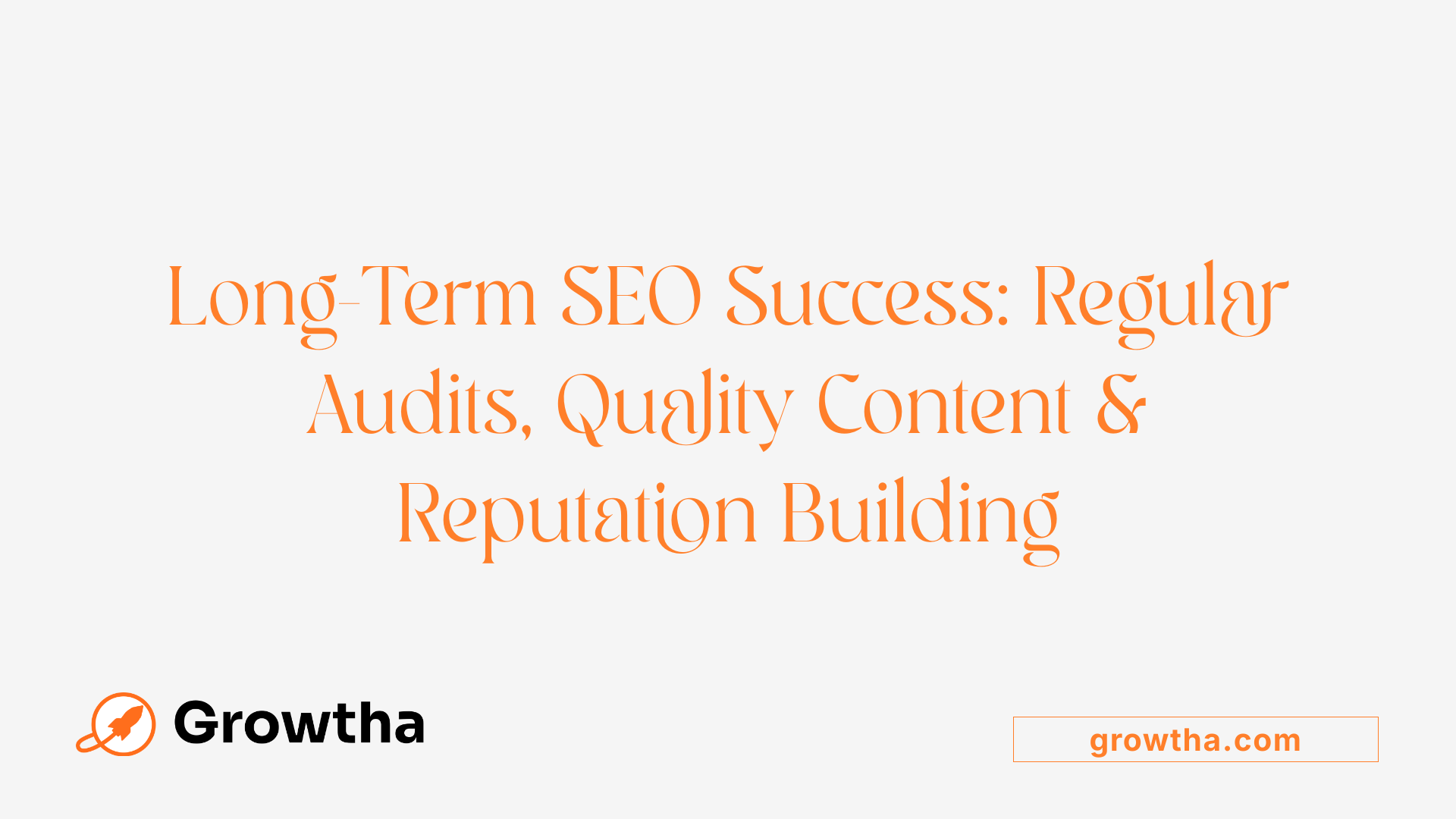
How often should a website perform SEO audits?
To stay aligned with Google’s evolving standards and recover from updates like the Medic, websites should conduct comprehensive SEO audits regularly. Experts recommend performing these audits quarterly or bi-annually. Frequent audits help detect technical issues, broken links, duplicate content, or outdated information that can harm rankings. They also ensure that content remains authoritative, accurate, and relevant, especially in sensitive sectors like health and finance.
During these audits, it’s essential to review on-page elements, backlink profiles, user experience factors, and technical health. This proactive approach allows site owners to address issues promptly and maintain high standards that Google values.
What ongoing practices are necessary to sustain high-quality content?
Maintaining high-quality content is an ongoing process that requires dedication beyond initial publication. Regularly updating existing articles ensures information stays current, especially in dynamic fields like medical, financial, or legal topics. Monitoring backlink quality is vital, as backlinks from reputable and relevant sources boost domain authority and trustworthiness.
Engaging with user reviews and feedback can also inform content improvements and demonstrate transparency, which contributes positively to E-A-T (Expertise, Authority, Trustworthiness). Staying informed about Google’s algorithm changes, such as core updates, allows website managers to adapt strategies preemptively.
Moreover, producing original, comprehensive, and well-researched content tailored to meet user needs is fundamental for long-term success. Consistent efforts in these areas foster a trustworthy online presence that aligns with Google’s quality guidelines.
How can website owners prepare for future algorithm shifts?
Preparation for future updates begins with staying educated through reputable sources like SEO news platforms, Google Webmaster Blog, and industry forums. Diversifying traffic sources — including social media, email marketing, and partnerships — reduces reliance on organic rankings vulnerable to algorithm adjustments.
Emphasizing a user-centric approach helps create content that genuinely meets visitors’ needs, which Google increasingly rewards. Building a strong portfolio of high-quality backlinks from authoritative sites further enhances resilience against ranking fluctuations.
Additionally, maintaining technical SEO health, such as fast page loads, mobile optimization, and secure browsing (HTTPS), prepares websites for shifts in ranking signals. Regularly reviewing site policies and content to adhere to updated guidelines, including those related to health and YMYL sectors, ensures ongoing compliance.
By implementing these practices—continuous content refinement, reputation management, and technical optimization—website owners can better navigate the unpredictable landscape of search engine algorithms and sustain their online presence over the long term.
Overview of Long-Term SEO Strategy Components
| Practice Area | Action Items | Purpose |
|---|---|---|
| Content Management | Regular updates, comprehensive coverage, accurate citations | Enhance relevance, authority, and user trust |
| Reputation Monitoring | Manage reviews, fix reputation issues, showcase certifications | Build trustworthiness and credibility |
| Technical SEO | Site audits, improve speed, fix errors, optimize structure | Ensure technical compliance and enhance user experience |
| Backlink Building | Obtain backlinks from reputable, industry-relevant sources | Increase domain authority |
| Staying Updated | Follow SEO news, participate in industry forums | Adapt strategies proactively to future updates |
Implementing a balanced combination of these efforts helps websites remain resilient and compliant with Google's standards. Regular review and adaptation are necessary for long-term success in an ever-changing SEO environment.
Legal and Ethical Considerations in Health Content
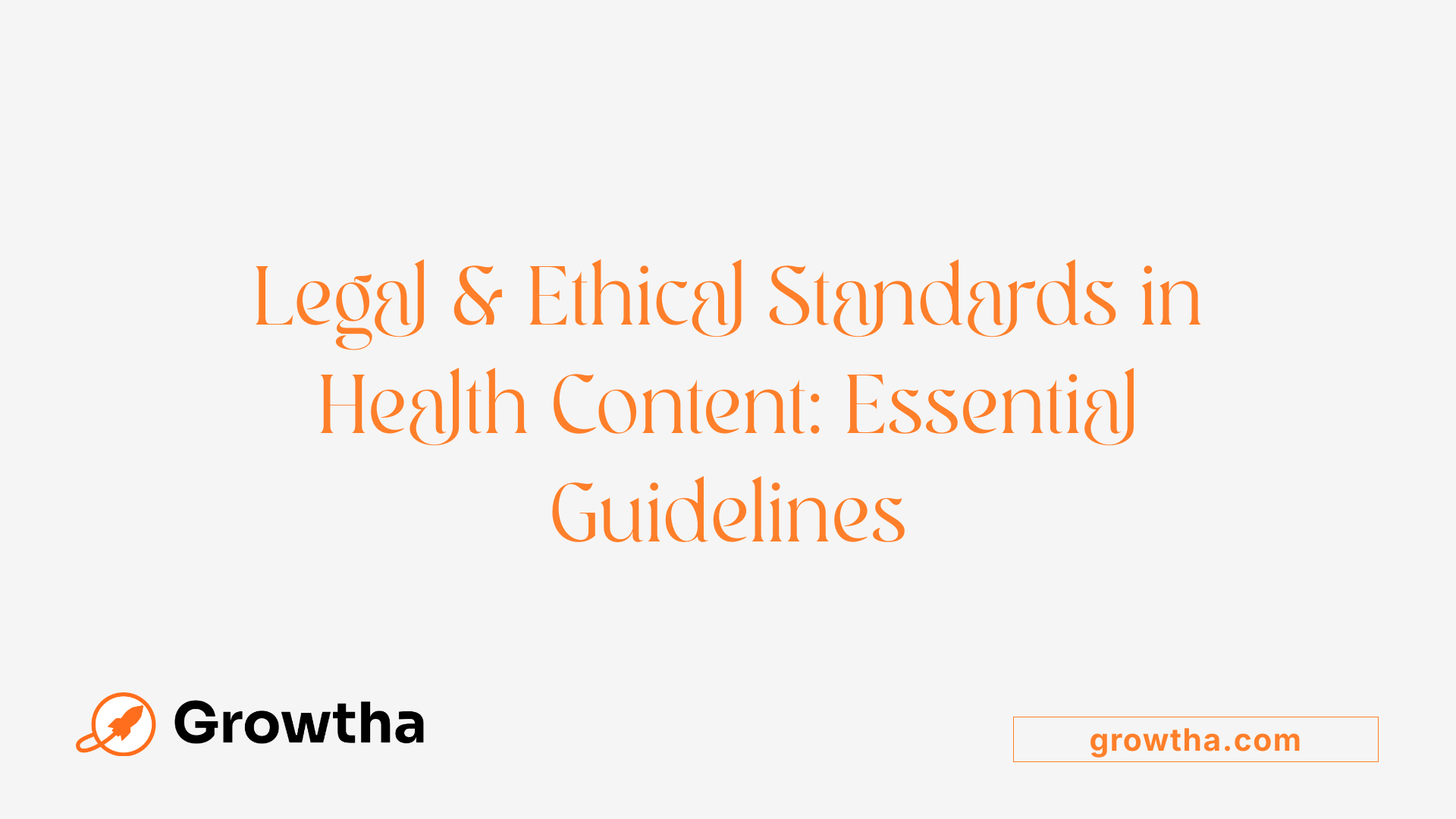
What legal considerations are essential for health websites?
Health websites must adhere to regional healthcare advertising regulations to operate legally and ethically. This includes prominently displaying disclaimers that clarify the scope of health advice offered and ensuring content is not misleading or exaggerated. Certification and author credentials may be required, depending on the jurisdiction, to demonstrate authority and compliance. Accurate representation of medical advice, without sensational claims or unsubstantiated information, is critical for maintaining legal standards. Sites should also stay informed about changes in laws to ensure ongoing compliance, especially in regulated sectors such as healthcare and pharmaceuticals.
How can websites avoid spreading misinformation?
Preventing the spread of health misinformation involves sourcing content from verified professionals with proven expertise. Citing reputable research, peer-reviewed studies, and official guidelines helps establish credibility. Avoiding sensational language and misleading claims ensures content remains factual and trustworthy. Regularly updating health information is essential, as scientific knowledge evolves. This proactive approach not only enhances user trust but also aligns with legal requirements for accuracy and safety. Good content management practices include fact-checking, referencing authoritative sources, and clearly distinguishing between scientific facts and opinions.
Why is transparency important in health-related content?
Transparency is vital for building trust with users and fulfilling legal obligations. Clearly disclosing author credentials, sources, and research backing claims helps establish the reliability of health content. Providing detailed disclosures about content sponsorship and affiliate relationships also promotes honesty. When users see open and honest communication, they are more likely to rely on the information provided, which enhances website credibility. Transparency ensures compliance with standards such as the Federal Trade Commission (FTC) regulations and similar laws worldwide. Ultimately, transparent health content reflects ethical responsibility and fosters informed decision-making.
| Aspect | Requirement | Purpose |
|---|---|---|
| Disclaimers | Prominent, clear disclaimers | Clarify scope and limitations of advice |
| Certification | Necessary certifications in some regions | Validate authority and legal compliance |
| Source citation | Reputable, peer-reviewed research | Support claims and prevent misinformation |
| Author credentials | Transparent and verifiable | Establish expertise and trust |
| Regular updates | Content review and revision | Ensure accuracy with evolving science |
| Transparency | Full disclosures of sources and sponsorship | Build trust and meet legal standards |
Understanding and applying these ethical and legal standards is crucial for health websites aiming to provide beneficial, accurate, and compliant content. Ensuring transparency, avoiding false claims, and adhering to regulations safeguard both users and the site's reputation, especially in sensitive fields like medical, health, and wellness industries. Staying informed about ongoing legal changes—such as those documented in the latest guidelines on 'Legal compliance in health content 2025'—can help maintain high standards and avoid legal complications.
The Future of Search: AI and the Evolving Role of Google
How is AI transforming Google search in 2025?
Artificial Intelligence (AI) has revolutionized Google search, creating a more personalized and comprehensive user experience. Features like AI Overviews synthesize information from multiple sources to present summarized, relevant answers at the top of search results. Google's enhanced understanding of context allows it to grasp user intent more accurately, moving beyond keyword matching to interpreting nuances in queries.
This shift means search results are now tailored to individual preferences, browsing history, and previous interactions. For example, health-related searches return not just links but detailed summaries drawn from credible health sources, incorporating the latest evidence and guidelines. These improvements demand content creators to produce well-structured, authoritative, and thoroughly researched information that can be easily interpreted by AI systems.
Implications for traditional SEO
The rise of AI-driven search features significantly impacts traditional SEO practices. Keywords alone are no longer sufficient; instead, focusing on semantic relevance, user intent, and comprehensive content is essential.
Marketers now need to optimize their websites with structured data and schema markup that help AI systems understand and categorize content efficiently. This includes detailed author profiles, transparent credentials, and high-quality backlinks from reputable sources. Technical SEO elements like site speed, mobile optimization, and accessible design remain critically important but are now complemented by efforts to enhance content clarity and AI compatibility.
Furthermore, content should be created with the aim of earning features like rich snippets, knowledge panels, and answer boxes, which are prominently displayed in AI-enhanced search results.
Adapting content for AI-enhanced search
To thrive amid these changes, content creators must adapt by prioritizing the quality, reliability, and clarity of their content. Developing content that anticipates user questions and provides in-depth, evidence-backed answers is vital.
Using structured data helps AI systems 'understand' the content better, increasing the likelihood of being featured in enhanced search results. Regularly updating content to reflect the latest information and maintaining transparency through detailed author bios and credible citations build trust and authority.
Additionally, focusing on creating a positive user experience, with fast-loading pages and easy navigation, supports better indexing and ranking in an AI-optimized environment.
Focused table for adapting to AI-driven SEO strategies
| Aspect | Traditional SEO Approach | AI-Enhanced SEO Approach | Why It Matters |
|---|---|---|---|
| Keyword Optimization | Focus on specific keywords | Use semantic search, related terms, and intent signals | Improves relevance in AI-driven results |
| Content Structure | Basic headings and simple layouts | Schema markup, detailed author bios, FAQs | Helps AI understand and feature content more effectively |
| Content Quality | Thin or keyword-stuffed content | In-depth, well-researched, authoritative content | Meets E-A-T standards essential for trustworthiness |
| User Experience | Basic mobile responsiveness | Fast load times, accessibility, clear navigation | Enhances user satisfaction and indexing signal |
| Backlinks and Authority | Quantity-focused backlinks | High-quality, relevant backlinks | Builds credibility and trustworthiness |
Overview of essential points
| Key Area | Focus Point | Impact on Search Ranking |
|---|---|---|
| Quality of Content | Create authoritative, well-researched material | High; essential for AI and human users |
| Structured Data | Implement schema markup and detailed author info | Improves visibility in snippets and AI interaction |
| Relevance and User Intent | Anticipate questions, create comprehensive answers | Boosts ranking and SERP placement |
| Technical SEO | Ensure site speed, mobile-friendliness, and accessibility | Critical for ranking in AI-enhanced search |
| Reputation and Trust Signals | Obtain backlinks from reputable sources, maintain positive reviews | Underpins trustworthiness and authority |
Final thoughts
As AI becomes an integral part of Google search, adaptation is crucial for content creators and website owners. The core remains the same: providing valuable, trustworthy, and user-focused information. However, the methods to reach users have evolved, emphasizing structured data, content depth, and technical excellence.
Staying updated with industry best practices, engaging with new SEO tools, and continuously improving content quality will help websites remain visible in the changing search landscape of 2025 and beyond.
Securing Your Digital Presence in a Changing Search Landscape
Adapting to Google's evolving algorithms, especially episodes like the Medic update, requires a long-term commitment to high-quality, user-first content and technical excellence. By continuously enhancing your site's authority through expert-driven content, authoritative backlinks, technical optimization, and reputation management, your website can remain compliant and competitive. Staying informed about updates and adjusting your strategies accordingly can help mitigate risks and leverage new opportunities in AI-powered search. Ultimately, compliance with Google’s standards is not a one-time effort but an ongoing process that reinforces your credibility, protects your search rankings, and sustains your visibility amid the dynamic digital landscape.
References
- Google's Medic update, and how to deal with it - Yoast
- What Is The Medic Algorithm Update? (Inc. Checklist To Fix It)
- How to fix your website if you were hit by Google Medic
- Google's Medic Update: How To Fix Your Website If You Were Hit
- Google Medic Update: Essential SEO Strategies for Health and ...
- How to Stay Ahead and Adjust To Google Algorithm Changes
- What is Google's Medic Update? - Axon Garside
- Google's "Medic" Update and How You Can Recover (Updated)







